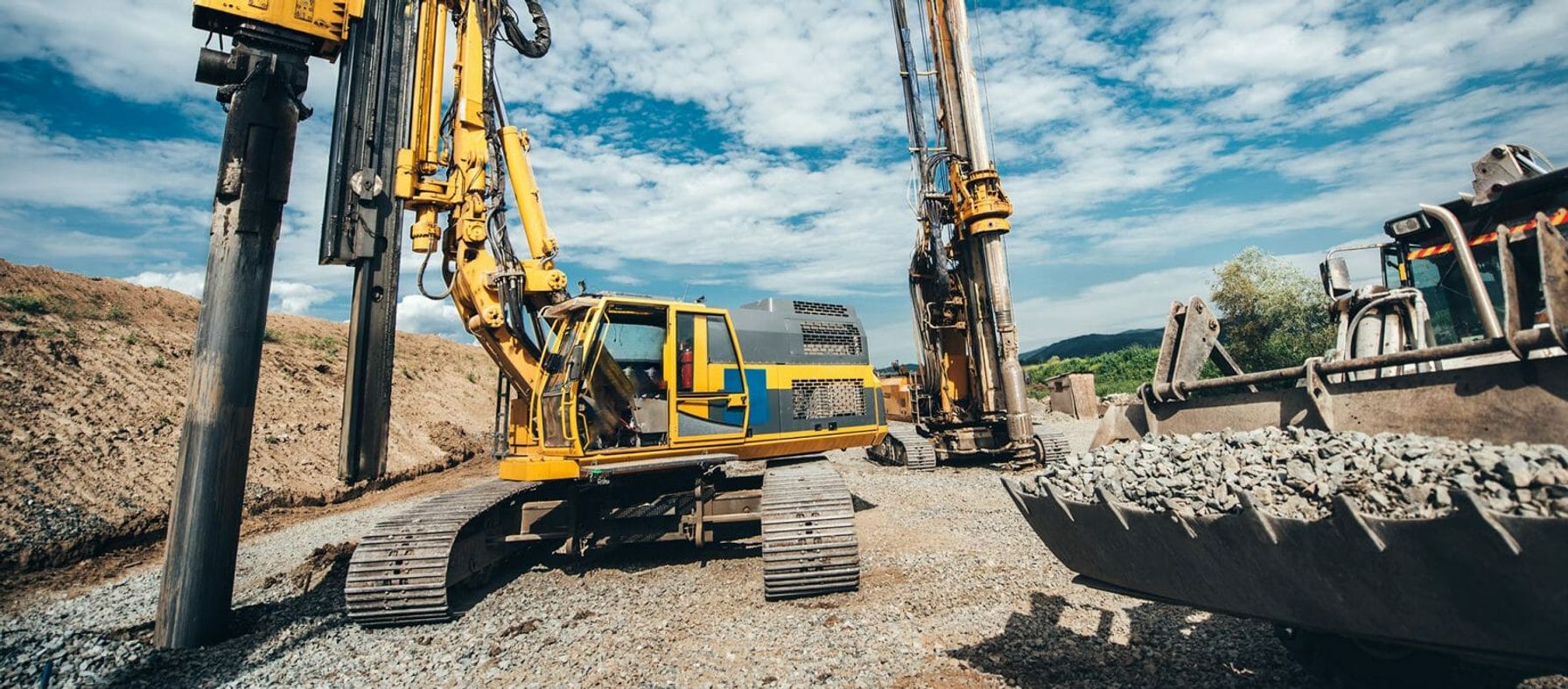Some Ideas on Geotheta You Need To Know
Some Ideas on Geotheta You Need To Know
Blog Article
Indicators on Geotheta You Need To Know
Table of ContentsThe Basic Principles Of Geotheta Some Known Questions About Geotheta.See This Report about Geotheta4 Simple Techniques For GeothetaGet This Report about Geotheta

They perform website investigations, collect samples, execute laboratory examinations, and assess information to review the suitability of the ground for building and construction projects - Geo Tech Engineer. Based upon their searchings for, geotechnical designers offer recommendations for foundation style, incline stability, maintaining frameworks, and reduction of geotechnical risks. They collaborate with other professionals, such as designers, structural engineers, and building teams, to guarantee that geotechnical factors to consider are integrated into the total job layout and execution
By assessing the behavior and residential or commercial properties of dirt and rock, they can identify possible geotechnical risks such as landslides, dirt negotiation, or slope instability. Their competence helps avoid failures or accidents that might endanger lives and property. Right here are some thorough responsibilities and duties of a geotechnical designer: Site Investigation: Geotechnical designers conduct website investigations to collect data on subsurface conditions.
They analyze the data to comprehend the residential properties and habits of the soil and rock, including their toughness, permeability, compaction features, and groundwater conditions. Geotechnical Evaluation and Layout: Geotechnical designers assess the data gathered throughout site examinations to evaluate the stability and viability of the site for construction jobs. They carry out geotechnical calculations and modeling to assess aspects such as bearing ability, negotiation, incline stability, lateral planet pressures, and groundwater circulation.
The Basic Principles Of Geotheta
Structure Layout: Geotechnical engineers play a critical role in designing structures that can securely sustain the desired framework. They assess the dirt problems and tons needs to figure out the appropriate foundation kind, such as shallow structures (e.g., grounds), deep structures (e.g (https://www.awwwards.com/geotheta/)., heaps), or specialized strategies like dirt enhancement. They think about elements such as negotiation limitations, birthing ability, and soil-structure interaction to create ideal structure styles
They examine building strategies, monitor website tasks, and perform area inspections to confirm that the design suggestions are followed. If unpredicted geotechnical concerns develop, they assess the situation and give suggestions for remediation or modifications to the design. Threat Assessment and Reduction: Geotechnical engineers evaluate geotechnical hazards and dangers related to the task site, such as landslides, liquefaction, or soil disintegration.

Collaboration and Communication: Geotechnical engineers function very closely with other specialists associated with a job, such as architects, architectural designers, and building teams. Efficient communication and cooperation are vital to incorporate geotechnical factors to consider into the general job design and building process. Geotechnical engineers offer technical know-how, solution queries, and guarantee that geotechnical requirements are satisfied.
A Biased View of Geotheta
Below are some types of geotechnical designers: Structure Engineer: Foundation designers concentrate on making and assessing structures for structures. They examine the soil conditions, load demands, and site characteristics to determine the most proper foundation kind and style, such as superficial structures, deep structures, or specialized methods like heap structures.
They evaluate the variables affecting slope security, such as dirt residential properties, groundwater conditions, and slope geometry, and create strategies to avoid incline failings and mitigate dangers. Quake Designer: Earthquake designers specialize in evaluating and designing structures to hold up against seismic pressures. They examine the seismic risk of a site, review soil liquefaction potential, and create seismic style standards to guarantee the safety and security and strength of frameworks throughout earthquakes.
They perform field testing, accumulate examples, and assess the collected data to identify the soil buildings, geologic formations, and groundwater problems at a site. Geotechnical Instrumentation Engineer: Geotechnical instrumentation designers concentrate on surveillance and measuring the actions of soil, rock, and structures. They install and keep instrumentation systems that keep an eye on aspects such as dirt negotiation, groundwater degrees, slope motions, and structural variations to analyze efficiency and supply very early cautions of potential concerns.
Little Known Facts About Geotheta.
They conduct tests such as triaxial examinations, combination tests, direct shear examinations, and leaks in the structure examinations to gather data for geotechnical analysis and design. Geosynthetics Engineer: Geosynthetics designers concentrate on the layout and application of geosynthetic materials, such as geotextiles, geogrids, and geomembranes. They utilize these materials to boost dirt security, reinforce inclines, give water drainage solutions, and control erosion.
They tend to be investigatory individuals, which implies they're intellectual, reflective, and curious. They are curious, methodical, sensible, logical, and sensible. Some of them are likewise social, implying they're kind, charitable, participating, client, caring, practical, compassionate, tactful, and friendly - Geo Tech Engineer.
In the office setting, geotechnical engineers use specialized software devices to perform estimations, develop layouts, and examine information. They prepare records, testimonial job requirements, connect with clients and group participants, and coordinate project tasks. The workplace setting provides a helpful atmosphere for click this link study, evaluation, and cooperation with various other experts associated with the task.
Not known Facts About Geotheta
They regularly go to project websites to carry out website examinations, assess geotechnical problems, and gather data for evaluation. These sees entail traveling to various places, occasionally in remote or difficult terrains. Geotechnical designers may do soil sampling, conduct tests, and monitor building and construction activities to guarantee that the geotechnical elements of the project are being applied properly.
Geotechnical designers additionally operate in specialized geotechnical laboratories. In these centers, they conduct experiments, carry out examinations on soil and rock samples, and examine the design properties of the products. Geotechnical lab engineers function thoroughly in these settings, managing testing tools, running instruments, and taping data. They collaborate with other lab team to ensure accurate and dependable testing outcomes.
Report this page